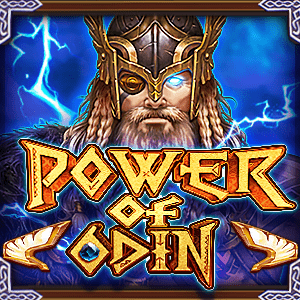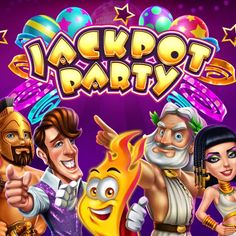The Power of Odin: The Allfather’s Strength and Influence
6 min read
The Power of Odin:
In the vast and rich tapestry of Norse mythology, few figures stand as tall and commanding as Odin, the Allfather. A god of immense wisdom, power, and mystery, Odin is not only the ruler of the Aesir gods but also one of the central figures in many of the sagas and myths that have survived from the ancient Norse world. Known for his association with war, poetry, wisdom, and death, Odin’s powers are vast and varied, making him a fascinating and complex character in the mythological pantheon. This article will explore the various aspects of Odin’s power, from his magical abilities to his roles as a ruler and a seeker of knowledge, as well as how these powers reflect the values and beliefs of the Norse people.
The Allfather: Odin’s Role in the Aesir Pantheon
Odin, the chief of the Aesir gods, occupies a central place in Norse mythology. He is considered the god of wisdom, war, and death, often depicted as a one-eyed figure with a long beard and a wide-brimmed hat. His role as a ruler is paramount—he is not only the leader of the Aesir gods but also the protector of Midgard (Earth) and the overseer of the Nine Realms, which are interconnected worlds in Norse cosmology.
Odin’s title, Allfather, reflects his position as the patriarch of the gods. He is the father of many notable gods, including Thor, the god of thunder, and Baldr, the god of beauty and light. His wife, Frigg, is the goddess of marriage and motherhood, and together they rule over Asgard, the realm of the gods. Odin’s power is not just in his rule but in his ability to govern with wisdom, foresight, and an understanding of the complex web of fate that governs the lives of gods and mortals alike.
Odin’s Wisdom and Sacrifices for Knowledge
One of Odin’s most distinctive traits is his insatiable thirst for knowledge. Unlike many gods, Odin’s powers are not solely based on brute strength or physical prowess. Instead, he often uses his intellect and cunning to achieve his goals. His wisdom is linked to his many sacrifices and efforts to gain knowledge, most notably his sacrifice of one of his eyes to drink from the Well of Mimir.
The Well of Mimir is a fabled source of wisdom located beneath the roots of Yggdrasil, the great World Tree that connects all nine realms. In exchange for a drink from the well, Odin sacrificed his right eye, gaining vast knowledge and understanding of the secrets of the universe. This sacrifice symbolizes Odin’s willingness to pay any price for wisdom. His single remaining eye became a symbol of his deep connection to the mysteries of the cosmos, as well as his role as a god who values intellect and foresight over physical strength gedetogel.
baca juga : Tiger Cops: Influence in Popular & Profit Culture
Odin’s pursuit of wisdom does not end with the Well of Mimir. He also sought knowledge from the Norns, the weavers of fate, who shaped the destinies of gods and humans alike. Odin’s ability to see the future and his awareness of Ragnarök (the prophesied end of the world) come from his constant search for wisdom. His knowledge of these events allows him to plan for the future, even though he knows that certain things are inevitable. This paradox, where Odin knows the fate of the world but still strives to change it, is a key aspect of his character.
Odin’s Magical Powers and Runes
Odin’s power extends beyond wisdom and knowledge into the realm of magic. He is credited with being the god who discovered and mastered the runes, the ancient alphabet used for writing and divination in Norse culture. According to the myth, Odin hung himself on Yggdrasil for nine days and nights, pierced by his own spear, in a self-sacrifice to gain knowledge of the runes. This act of self-sacrifice is a reflection of Odin’s willingness to endure pain and suffering for the sake of gaining deeper understanding.
The runes, once revealed to Odin, granted him the ability to cast powerful spells, communicate with the dead, and even influence the outcomes of battles. They were not just a form of writing but were believed to hold magical power. The runes were used for divination, to cast protective charms, and even to control the elements. Odin, as the master of these magical symbols, wielded great influence over the physical and spiritual realms.
In addition to the runes, Odin was also associated with the magical art of seidr, a form of shamanic magic that allowed him to manipulate the fabric of reality. While seidr was primarily practiced by women in Norse society, Odin’s ability to perform this magic shows his versatility and his willingness to break the norms of his time in order to increase his power. His ability to shape reality and intervene in the lives of gods and mortals alike is another testament to the vastness of his powers.
Odin and the Valhalla: Lord of the Fallen
Odin’s power is also connected to his role as the lord of Valhalla, the great hall of the slain. Valhalla is the afterlife destination for warriors who die bravely in battle, where they are honored and prepared for Ragnarök. As the ruler of Valhalla, Odin is not only a god of war but also the guardian of the fallen. The warriors in Valhalla, known as the Einherjar, are honored by Odin, who prepares them for the final battle at the end of the world.
This aspect of Odin’s power reflects the importance of war and honor in Norse culture. For the Norse people, dying in battle was seen as a noble fate, and Odin’s role as the lord of Valhalla reinforced the idea that those who fought bravely were rewarded in the afterlife. Odin’s ability to control the souls of the bravest warriors gave him immense power, as he could call upon the Einherjar to fight on his behalf when Ragnarök arrived.
Odin’s relationship with death is not limited to the warrior class. He is also associated with the realm of the dead, Helheim, where he sends those who die of illness or old age. His connection to both life and death highlights his role as a god who oversees the cycle of existence, maintaining balance between the living and the dead.
Odin’s Role in Ragnarök
The most dramatic and climactic aspect of Odin’s power is his involvement in Ragnarök, the prophesied end of the world. While Odin is aware of the coming destruction, he is also determined to face it with courage and honor. According to the prophecy, Odin will die at the hands of the great wolf Fenrir, but not before he leads the gods and the Einherjar into a final battle against the forces of chaos.
Odin’s awareness of his death at Ragnarök is a reflection of his wisdom and acceptance of fate. Despite knowing that he will fall, he continues to prepare for the inevitable conflict, rallying the gods and ensuring that they are ready for the final confrontation. His leadership in the face of his own demise is a testament to his strength and resolve.
The death of Odin at Ragnarök, while tragic, is not the end of his legacy. After his fall, his son Víðarr is prophesied to avenge him, continuing the cycle of life and death that Odin had overseen. Odin’s sacrifice, and his eventual death, symbolize the eternal struggle between order and chaos, and his power lives on in the actions of his children and the gods who survive the apocalypse suzuyatogel.




